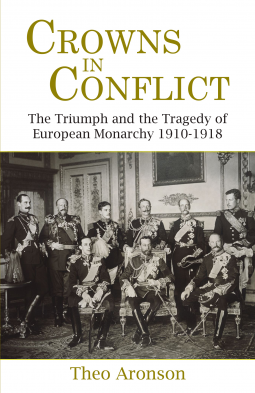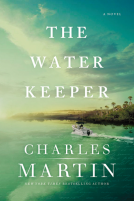
Crowns in Conflict
The Triumph and the Tragedy of European Monarchy 1910-1918
by Theo Aronson
This title was previously available on NetGalley and is now archived.
Send NetGalley books directly to your Kindle or Kindle app
1
To read on a Kindle or Kindle app, please add kindle@netgalley.com as an approved email address to receive files in your Amazon account. Click here for step-by-step instructions.
2
Also find your Kindle email address within your Amazon account, and enter it here.
Pub Date Dec 09 2015 | Archive Date Jul 18 2017
Description
The years immediately before the First World War saw the last great flowering of European monarchy. Although sovereigns no longer ruled by divine right, their prestige and positions remained almost intact. The glittering centerpieces of national life, those crowned and anointed monarchs were still widely regarded as mystical, unassailable, divinely guided. And, with the majority of them being so closely related, they constituted a royal clan, an international freemasonry through which it was assumed the peace of Europe was being maintained.
World War I shattered all this. King took up arms against king; cousin was pitted against cousin. Twelve leading monarchs, ranging from the vainglorious Kaiser Wilhelm II to such lesser-known figures as the brigandly Nicholas of Montenegro, the 'outre' Foxy Ferdinand of Bulgaria and the tragic Emperor Karl of Austria-Hungary, were involved in the conflict. For, in the end, that celebrated kinship of the family of kings proved irrelevant. Against the upheavals of these years, monarchs were revealed as both powerless and impotent.
Here, Theo Aronson has assembled the entire cast of embattled monarchs. His is the story of eight momentous years viewed, as it were, from the monarchical standpoint; an account of the passing, not only of their particular world, but of the entire monarchic and dynastic order of the Continent. It describes the brilliant sunset and the dramatic break-up of the Europe of the Kings.
Available Editions
| EDITION | Paperback |
| ISBN | 9781910670477 |
| PRICE | $17.99 (USD) |
Average rating from 10 members
Featured Reviews
 Janet P, Reviewer
Janet P, Reviewer
One of the more notable things about Europe and World War I is that before the war there were many European kings (most related to each other) and after the war there were very few. This book explores WWI in relation to the monarchs of Europe.
It explores the lives of many of them, the kind of monarchies they had and their relations with their governments and with the other monarchs.
As the book moves closer to the war, it focuses more on the history, including both Balkan wars and how the monarchs' action lead to the conflict. During the course of the war he continues to look at the rulers and their varied responses to and actions in WWI.
Ultimately he shows how a combination of Wilson's Fourteen Points and the actions of the kings led to the downfall of the houses.
It's an intriguing way to look at World War I, full of really interesting characters that are not often encountered. Unless it is concerned directly with a King's action, such as King Albert's defense of Belgium, the author mostly skips over the battles and course of the war. Because of this, the reader will be better served if he knows something of the history of WWI.
Other than that, this is an excellent history of the era.
 Reviewer 98309
Reviewer 98309
Crowns in Conflict: The Triumph and the Tragedy of European Monarchy, 1910-1918 is an interesting read and I recommend it.
 Tim G, Reviewer
Tim G, Reviewer
While reading Theo Aronson’s Crowns in Conflict: The Triumph and Tragedy of European Monarchy 1910-1918, an essentially biographic approach to World War I’s effect on Europe’s monarchies, I often thought of another book I read years ago. The Fall of Eagles, C.L.Suzberger’s account of the fall of the Habsburg, Hohenzollern, and Romanov dynasties, was on my bookshelves for decades. I say decades because in checking I learned it was published exactly 40 years ago.
Aronson’s approach to this topic differs in two respects from Sulzberger’s. First, he takes a broader view, looking at roughly a dozen major and minor monarchs who sat on Europe’s thrones in the second decade of the 20th century. Second, as noted, Crowns in Conflict is biographic in nature, not surprising given that Aronson, who died in 2003, wrote nearly two dozen royal biographies. Rather than rehash how the Central and Entente Powers careened into war, the book looks at the history of each monarch and what the kings and queens did through the course of the war.
This approach works in large part because most of the royalty were related to each other. For example, Britain’s King George V, Tsar Nicholas II of Russia, Kaiser Wilhelm II of Germany and the crown princesses of Romania and Greece were all first cousins. The kings of Belgium and Bulgaria were also cousins of King George. Aronson uses these connections to not only explore the relationships among the monarchs but how each monarchy was led into the war and its ultimate effect on them.
Originally released in 1986 but with a new imprint two years ago, Crowns in Conflict also recognizes and explores the impact the advent of constitutional monarchy on each monarch’s power. The monarchs were no longer the only voice or decision-maker. “When set against the forces of nationalism and militarism, these dynastic relationships counted for nothing,” Aronson observes. Instead, the monarchs’ loyalty was now “country before caste.”
Britain, Germany (ruled by the Hohenzollerns), Austria-Hungary (the Habsburg empire) and Russia (the Romanovs) were the powerhouses and the last three bore the most responsibility for World War I. Thus, George V, Tsar Nicholas II, Kaiser Wilhelm II and Franz Joseph of Austria-Hungary are the main focus, Yet other monarchies, such as Belgium, Bulgaria, Greece, Italy and Serbia, also were buffeted by the war. Three such monarchs -- King Albert of Belgium, Victor Emmanuel of Italy and Ferdinand of Bulgaria -- also are looked at in detail.
Some may view Aronson’s approach as a bit superficial or perhaps even gossipy. I, though, found it an interesting version of an oft-told tale. Rather than simply being a diplomatic or military history, Crowns in Conflict uniquely personalizes World War I. It also helps place monarchies in a historic context.
In fact, the book may make the 1911 Encyclopædia Britannica somewhat prescient. Its entry for monarchy said that while “it survives as a political force, more or less strongly, in most European countries, ‘monarchists,’ in the strict sense of the word, are everywhere a small and dwindling minority.” What the encyclopedia couldn’t or didn’t predict was what would succeed these hereditary autocracies. “Dictatorships of one sort or another shortly were established in almost any country over which the monarchs had once reigned,” Aronson observes.
(Originally posted at <a href="http://prairieprogressive.com">A Progressive on the Prairie</a>.)
 Reviewer 49131
Reviewer 49131
This was such a good look at the monarchies of Europe, their relations, and the world at the time. It was very interestingly written, not dry like some history can be. A well written look at European monarchies during this time.
 Diana T, Reviewer
Diana T, Reviewer
Book received from NetGalley.
This book focuses on the bad blood in the interrelated monarchies of Europe prior to the First World War. I knew a bit of the issues that Russia, Britain, and Germany had with each other and what the cousins possibly thought of Wilhelm II. There wasn't much love lost among the family and I think that once Queen Victoria died, who was the Grandmother to all of them, they lost the glue that kept them from trying to conquer each others countries. I loved reading this and I did learn a few things about some of the tension that led to The Great War.










